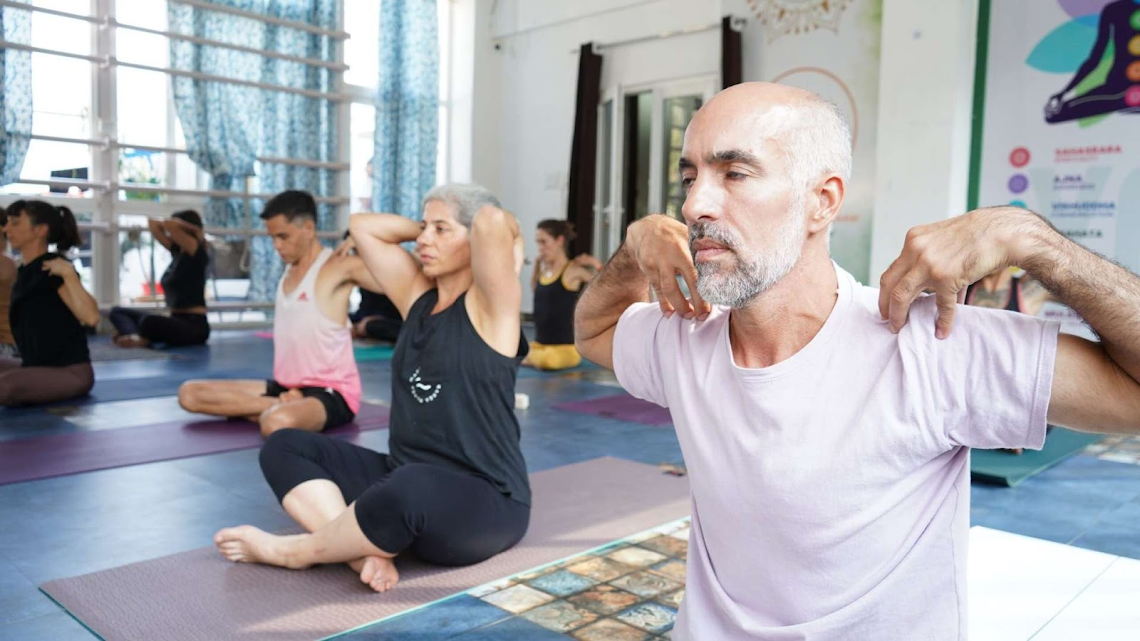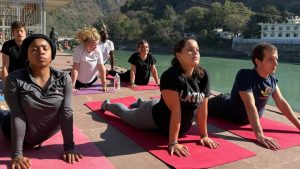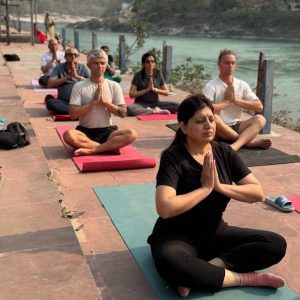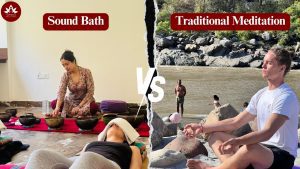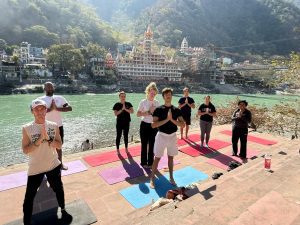Yoga, one of the most profound spiritual and physical practices from ancient India, is far more than a series of postures. It is a holistic path of self-realization outlined thousands of years ago by Sage Patanjali in the Yoga Sutras.
Central to his teachings are the 8 Limbs of Yoga, also known as Ashtanga Yoga. These eight steps serve as a roadmap to cultivate discipline, inner peace, and complete union with the higher self.
Here, we’ll look at each limb in detail, its significance, and how it can be applied in our daily lives for personal growth and spiritual awakening.

Patanjali’s 8 Limbs of Yoga
1. Yama – Ethical Disciplines
The first limb, Yama, lays the foundation of yoga by teaching us how to interact with the external world. It consists of five moral principles that guide ethical living and harmonious relationships.
- Ahimsa (Non-Violence): Practicing kindness in thoughts, words, and actions.
- Satya (Truthfulness): Living with honesty and integrity.
- Asteya (Non-Stealing): Respecting others’ belongings, ideas, and time.
- Brahmacharya (Moderation): Maintaining balance in desires and conserving energy.
- Aparigraha (Non-Possessiveness): Letting go of greed and material attachment.
When we live by these values, we build a strong moral compass that sets the tone for the deeper aspects of yoga.
2. Niyama – Personal Observances
Niyama is the second limb, which focuses on self-discipline and inner growth. It is about cultivating purity, contentment, and devotion.
The five niyamas are:
- Shaucha (Cleanliness): Maintaining purity of body, mind, and environment.
- Santosha (Contentment): Practicing gratitude and acceptance.
- Tapas (Discipline): Developing willpower through consistent practice.
- Swadhyaya (Self-Study): Reflecting on scriptures and self-awareness.
- Ishwar Pranidhana (Surrender to the Divine): Trusting a higher power and living with devotion.
Together, the niyamas nurture spiritual progress and bring inner clarity.
3. Asana – Physical Postures
The third limb, Asana, is perhaps the most well-known in modern times. While often associated with fitness, its true purpose is to prepare the body for meditation.
- Stability and comfort are the key qualities of an asana.
- Practicing regularly improves flexibility, strength, and balance.
- Asanas promote physical health by supporting digestion, circulation, and nervous system function.
As a result, asana practice helps us maintain a healthy body, allowing the mind to focus inward. At Saptkaya Yoga School in Rishikesh, we guide students through authentic asana practice rooted in ancient tradition. Our retreats combine posture training with meditation, Ayurveda, and mindful living to help you experience the true depth of yoga beyond just physical exercise.
4. Pranayama – Breath Control
Pranayama is the science of regulating the breath. It is not just about breathing exercises but about mastering prana, the vital life force.
Key benefits of pranayama include:
- Calming the mind and reducing stress.
- Energizing the body by improving oxygen flow.
- Preparing the mind for meditative practices.
Techniques such as Nadi Shodhana (alternate nostril breathing) and Kapalabhati (skull-shining breath) are powerful tools to balance energy and improve concentration.
While pranayama can be practiced individually, learning under the guidance of experienced teachers ensures safety and deeper benefits. At Saptkaya Yoga School, our retreats include daily pranayama sessions that balance energy and prepare the mind for meditation.
5. Pratyahara – Withdrawal of Senses
Pratyahara, the fifth limb of yoga, guides us to withdraw our senses and look within. In today’s age of endless distractions, this practice holds profound importance for cultivating inner focus.
- It involves consciously withdrawing from external stimuli.
- Helps us master self-control by not being overpowered by sensory desires.
- Serves as the bridge between external practices (like asana and pranayama) and internal practices (like meditation).
By practicing pratyahara, we conserve mental energy and develop inner awareness.
6. Dharana – Concentration
Dharana means cultivating one-pointed focus. The mind is often restless, jumping from one thought to another, and dharana trains it to stay steady.
- It is cultivated by directing attention toward a mantra, the breath, or a chosen point of focus.
- Builds mental strength and reduces distractions.
- Prepares the mind for deeper meditative states.
When we strengthen concentration, we lay the groundwork for profound self-realization.
7. Dhyana – Meditation
The seventh limb, Dhyana, represents meditation in its deepest and most authentic form. Unlike dharana, which is effortful concentration, dhyana is a state of effortless flow of awareness.
- In this state, the mind becomes still and profoundly aware.
- Practicing regularly reduces stress, increases clarity, and enhances intuition.
- It connects us with our inner selves, fostering spiritual growth.
Dhyana is the doorway to transcendence, where the practitioner experiences peace beyond the ordinary mind.

8. Samadhi – Union with the Divine
The final limb, Samadhi, is the culmination of yoga. It is the state of perfect union with the higher consciousness.
There are stages of samadhi:
- Savikalpa Samadhi: Awareness remains, but deep peace is experienced.
- Nirvikalpa Samadhi: Complete transcendence of the ego and realization of oneness.
In samadhi, we experience liberation (moksha)—a state of bliss, freedom, and unity with the universe.
Experience the 8 Limbs of Yoga with Saptkaya Yoga School
If you wish to experience the 8 Limbs of Yoga in daily practice, consider joining us at Saptkaya Yoga School, Rishikesh. Our yoga and Ayurveda retreats are designed to immerse you in yogic wisdom while providing personalized guidance, healing therapies, and a nurturing environment by the Ganges.
Through a blend of asana, pranayama, meditation, Ayurveda, and spiritual practices, we help you live the true essence of yoga, not just as theory, but as a lifestyle. Whether you are new to yoga or a dedicated practitioner, our retreats offer the perfect setting to deepen your practice and connect with your inner self.
👉 Book Your Transformational Retreat!
Timeless Relevance of the 8 Limbs of Yoga
Though Patanjali described these 8 limbs thousands of years ago, they remain incredibly relevant today. Together, they form a comprehensive lifestyle system that balances body, mind, and spirit.
From ethical living and self-discipline to physical well-being, breath mastery, and deep spiritual awakening, the Ashtanga path of yoga offers timeless wisdom for anyone seeking a more conscious and fulfilled life.
Final Thoughts on the 8 Limbs of Yoga
The 8 Limbs of Yoga are not mere steps but an integrated journey of transformation. By gradually incorporating these principles into our lives, we align ourselves with inner harmony, higher wisdom, and spiritual liberation.
Whether you are a beginner or an advanced practitioner, exploring these eight limbs of yoga will deepen your practice and bring lasting fulfillment.

